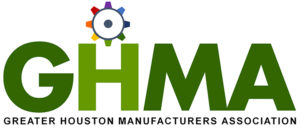 With energy costs on the rise, commercial and industrial (C&I) customers must find creative solutions to offset rising energy bills. Next to payroll, your energy bills can be the second highest business expense, but organizations are often at a loss for how to reduce them. Most commercial customers are unaware that they may tap hidden energy savings by partnering with a qualified energy consultant. A good consultant offers holistic, customizable solutions that cannot only reduce your costs but can introduce environmental solutions to help you meet your sustainability goals. Here are 10 proven energy savings solutions that a knowledgeable consultant can deliver to commercial and industrial customers.
With energy costs on the rise, commercial and industrial (C&I) customers must find creative solutions to offset rising energy bills. Next to payroll, your energy bills can be the second highest business expense, but organizations are often at a loss for how to reduce them. Most commercial customers are unaware that they may tap hidden energy savings by partnering with a qualified energy consultant. A good consultant offers holistic, customizable solutions that cannot only reduce your costs but can introduce environmental solutions to help you meet your sustainability goals. Here are 10 proven energy savings solutions that a knowledgeable consultant can deliver to commercial and industrial customers.
1) Historical Usage Data Analysis
Analyzing a facility’s energy usage patterns is critical to understanding how a business consumes energy. Knowing how and where energy is consumed can lead to reduced costs and lower consumption.
2) Energy Procurement Solutions
When an energy consultant has strong relationships with energy suppliers it can help commercial and industrial customers shop for the best supply rates available. Whether it’s shopping for natural gas, fuel oil or renewables – the competition is stiff – and a qualified energy consultant can help you navigate through the noise and identify the best price, product and contractual terms to meet your specific needs.
3) Power Factor Correction Solutions
One of the hidden costs unknown to most utility customers is “power factor” fees. If you are a large manufacturing organization or operate 24/7 data centers running servers, AC units, etc., there is increased potential for having a poor power factor. Since motors create wasted power while idling, the more motors and production equipment operating the higher your exposure is to posting a deficient power factor. This wasted energy – or reactive power – costs utilities money since the energy is not consumed on a regular basis. For example, if a utility has a tariff that requires customers maintain a 95% power factor or greater, those customers that don’t meet this requirement can see additional charges on their monthly bills. Identifying your utilities’ specific power factor requirements, determining what your power factor is, and working with an informed consultant to evaluate custom solutions can lead to significant savings.
4) Efficient Lighting Solutions
Working with lighting distributors, commercial and industrial businesses can purchase and install more efficient and affordable lighting solutions to save on energy. With new and improved LED technologies the solutions are broader than ever. Whether it’s re-lamping (Replacing existing lamps/bulbs with more efficient product); Retrofitting (Replacing existing fixtures, lamps/bulbs and ballast with new equipment) or simply ordering more efficient replacement product for your existing fixtures, commercial industrial customers can achieve sizable savings through efficient lighting solutions.
5) Energy Aggregation Programs
For businesses located in qualifying deregulated states, owners should seek out and take full advantage of energy aggregation programs – bundling multiple sites together to achieve lower energy costs. In some cases, energy consultants can help commercial and industrial entities with multiple sites combine their collective usage and attract better pricing and contractual terms from bidding suppliers. For instance a multi-site restaurant chain or portfolio of commercial real estate buildings could work with an experienced consultant to explore aggregating their energy consumption for all their sites to take advantage of lower power costs. Some consultants work with Chambers of Commerce and even cities, counties and townships to structure aggregated programs to help the participants achieve preferred rates.
6) Engineering Studies
Engineering studies can be used to lower energy usage and reduce costs in a myriad of ways. Various states offer sales tax exemption options to qualified commercial and industrial entities. A comprehensive efficiency study can help identify if you qualify for this important benefit. Energy efficiency studies can lead to attractive savings rebates as well as state and federal incentives. For instance, if a manufacturing business upgrades its outdated equipment (pumps, chillers, lighting, etc.) they can lower power consumption to gain efficiency and qualify for valuable exemptions. Businesses may also use efficiency studies to meet state or city benchmarking requirements and demonstrate compliance as needed.
7) Demand Reduction Strategies
Commercial entities can save on power bills in two primary ways:
- Supply side savings – determine how to pay less for energy.
- Demand side savings – determine how to use less energy.
By reducing peak demand with more efficient lighting, more efficient pumps and other strategic solutions, companies shift habits and can save on electricity bills. For instance, if a manufacturing plant turns on all equipment at 8 a.m. every day, they can reduce consumption by staggering the start times and reduce demand. The lower the peak demand/capacity, the less you pay for power.
8) Sustainable Energy Products
Meeting sustainability initiatives is becoming a growing trend for businesses. Installing solar panels or wind technology can help a commercial building be less reliant on utility companies. Commercial and Industrial customers can also purchase renewable energy certificates (REC’s) or earn revenue generating white tags by reducing demand and increasing efficiency.
9) Demand Response Programs
By participating in demand response programs a commercial or industrial business is capable of generating sizable income by lowering energy consumption during times when supply is low and demand is high on the grid. Simply put: when demand is high for energy, utilities tend to increase prices and the need for power becomes worth paying consumers for. A business can offset the rising fees by giving power back to the grid to help prevent brown-outs and black-outs. An analysis of your energy load can determine how much is available for you to return. In some instances, revenues for participation can be as high as $200,000 per year or more. By way of example, data centers, hospitals and many large manufacturers are great candidates for these revenue generating programs with the capability to switch to back-up generators and curtail load while pocketing tens to hundreds of thousands of dollars in revenue in the process.
10) Comprehensive Bill Auditing
Since deregulation and customer choice is a new trend, larger commercial entities located in states with no energy buying choices, can employ energy consultants for comprehensive cost study to audit energy bills and fixed cost expenses to find savings in multiple cost categories. Some consultants will require no upfront cost for the service, but instead share in the savings they find.
The most lucrative way for commercial and industrial businesses to take advantage of lower energy costs is by leveraging energy consultants for a custom savings assessment. Whether your business is located in a state that offers energy choice, or whether you are just interested in uncovering hidden savings, consider partnering with a qualified energy consultant. However, caveat emptor applies. Make sure any consultant has a demonstrated, national reputation for identifying hidden costs and lowering energy bills, with a goal of generating new revenue for your business.
Scott Heath is Managing Partner at Good Energy, LP.



